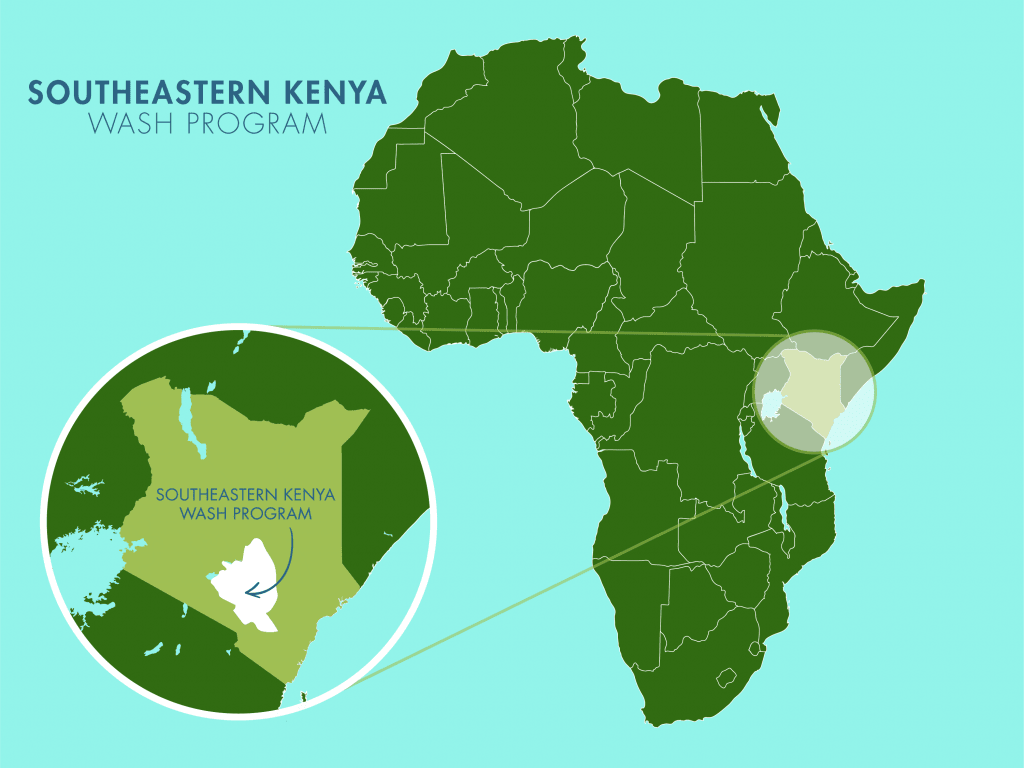The 700 residents of Katambauku Makua rely on a single, distant dug well as their only source of water. Each day, they spend a minimum of two hours making the exhausting round trip to collect it. This daily burden disrupts their routines, taking away valuable time that could be used for work, education, or caring for their families. While water is essential, the effort required to access it comes at a high cost to the community’s well-being and productivity.
After expending so much energy to collect water, people risk their health each time they consume it because the well is open to contamination. It is a high cost to pay, but without another option, people have no choice.

People collect water from the faraway, unprotected well.
"The hand-dug well easily becomes contaminated with pathogens, including bacteria, viruses, and parasites from animal waste, runoff, and human activity. This has led to gastrointestinal illnesses. Frequent illnesses due to contaminated water have led to malnutrition, as individuals are unable to absorb nutrients effectively and lose their appetite when ill. Ongoing health issues have led to higher medical expenses for families and strained local health care," reported Field Officer Alex Koech.

Mutua.
Mutua, who is only 12, knows the burden of walking long, exhausting distances to fetch less-than-ideal water.
"We do not have enough water at our well because of the poor precipitation throughout the year, and it makes me feel sad and angry because it forces us to endure long and exhausting walks. Fetching water takes [a] long [time] because we have to cover several kilometers to draw water, [and] the steep and dusty terrain makes returning home a time-consuming and tedious process," Mutua lamented.
Anxiety runs rampant for all who collect water here. Not only is the water dangerous, but the well itself poses significant risks.
"I am worried because the hand-dug well is risky to use, and an adult has to be nearby because it is open and very deep. Sometimes it takes [too] long to fetch water, especially when the water takes [a] long [time] to replenish itself, meaning I have to return home when it is already getting dark. Most of my weekends and holidays are spent on fetching water rather than preparing for my exams," he continued.

Mutua collects water at the faraway open well.
Mutua has dreams for the future, but without an intervention that provides safe, accessible water for him to quickly collect without wasting time and vital energy, those dreams seem impossible.
"When I grow up, I want to be a pilot and improve the living standards here at home with my income. Adequate water availability will create a conducive learning space, enabling me to achieve my dream," Mutau shared.
We plan to install a well that is fed by an accompanying sand dam to help alleviate the water crisis in this community. Then Mutua can return to learning and enjoying his childhood, and finally leave his heavy burden behind.
Solving the water crisis in this community will require a multifaceted system that will work together to create a sustainable water source that will serve this community for years to come.
Note: Our proposed water point can only serve 300 people per day. We are working with the community to identify other water solutions that will ensure everyone has access to safe and reliable drinking water.
Steps Toward a Solution
Our technical experts worked with the local community to identify the most effective solution to their water crisis. Together, they decided to construct a protected dug well and sand dam.
Protected Dug Well Near A Sand Dam
Once a sand dam is installed and has time to mature by gathering sand and silt, groundwater increases significantly in the entire area surrounding the project. This provides a reliable source of groundwater that wasn’t possible before. As a result, wells can be constructed to take advantage of the water stored and filtered in the collected sand.
During the construction of the protected dug well, we will build a platform for the well and attach a hand pump. The community will gain a safe, enclosed water source capable of providing approximately five gallons of water per minute.
This protected dug well will be connected to a sand dam to obtain water.
Community Education & Ownership
Hygiene and sanitation training are integral to our water projects. Training is tailored to each community's specific needs and includes key topics such as proper water handling, improved hygiene practices, disease transmission prevention, and care of the new water point. Safe water and improved hygiene habits foster a healthier future for everyone in the community.
Encouraged and supported by our team's guidance, the community elects a water user committee representative of its diverse members. This committee assumes responsibility for maintaining the water point, organizing community efforts, and gathering fees to ensure its upkeep.

 Protected Dug Well
Protected Dug Well
 Rehabilitation Project
Rehabilitation Project


















